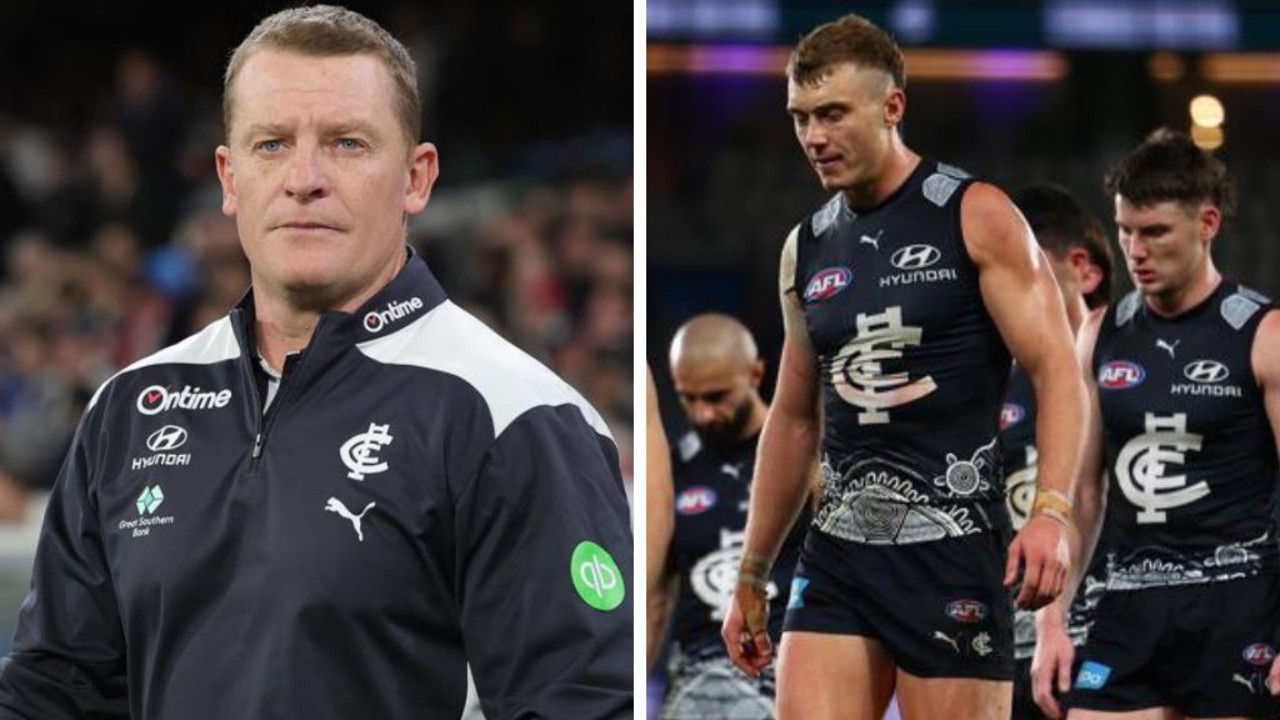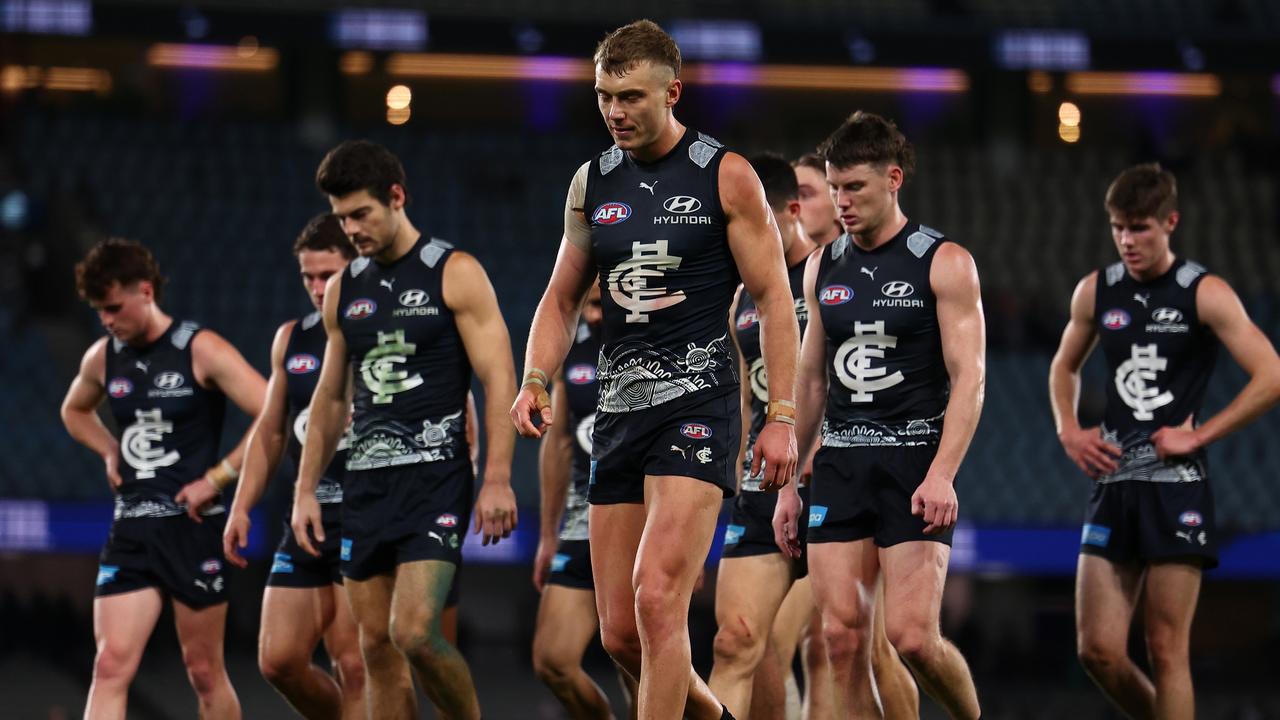Mick Malthouse can see a lot of similarities between Liam Jones and Collingwood’s Ben Reid
WHEN Liam Jones thought his time in the AFL was coming to an end, he reached out to his former coach Mick Malthouse. What advice did Mick have for the now star defender?
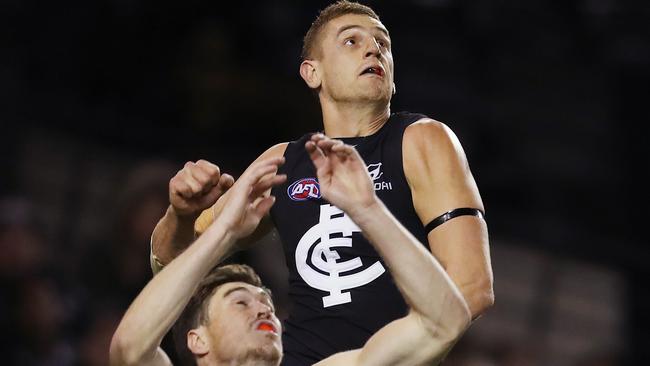
Carlton
Don't miss out on the headlines from Carlton. Followed categories will be added to My News.
IT’S no coincidence that since Liam Jones returned to the Carlton senior team, the Blues have caused two upsets.
Playing in defence he has nullified two key forwards — Greater Western Sydney’s Jonathon Patton and the Gold Coast’s Tom Lynch — keeping the scores low enough to give Carlton a chance to stay in the game until the end.
And I couldn’t be happier for him that his chance at senior level is back on track.
It was the end of the 2014 season when he was offered for trade from the Western Bulldogs. Brendan McCartney was keen to keep him but at that stage Jones would have limited opportunities there.
Carlton was very restricted with the salary cap and had little wriggle room to move on many players.
At the time Andrew Walker had an issue with his knee and Levi Casboult was inconsistent in front of goal, so Jones looked like a good option for the forward line.
Such a likeable young man, he was a power animal on field but lacked endurance. He could read the play beautifully, had a strong mark and a powerful kick, and uncharacteristically for a forward he had a quiet demeanour.
He actually had many similar attributes to Ben Reid whom I coached at Collingwood. Reidy came to the Pies as a key forward but couldn’t find the space in the forward 50 to have a big impact.
He found his calling when he moved back and is now one of the premier backmen in the competition.
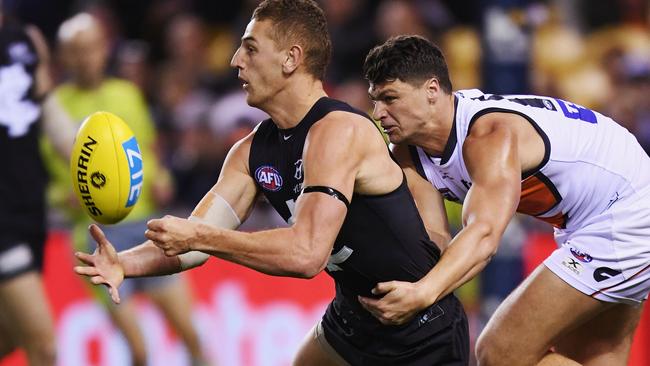
Of course I was only at Carlton for eight games in 2015 so I didn’t get to coach Liam for long, but at the end of last year he approached me about weighing up his options as he felt his days at the Blues were numbered.
I told him to hang in there for as long as he could, and to continue to put the effort in.
Effort usually has its rewards, and in this case it was accepting the challenge of a move to defence.
The switch came about because the Northern Blues were nurturing first round draft pick Harry McKay, grooming him for a key forward post at senior level (which doesn’t seem too far away given his naming as emergency recently.)
But when opportunity arises it’s the brave who throw themselves at it, and Liam did that with gusto.
HUGE CLASH: CAN ICE-COOL BLUES HANDLE TIGER HEAT?
KEY RECRUITS: WHICH AFL STARS COULD BE ON THE MOVE?
YOUNG STAR: SILVAGNI ADDS TO BLUES’ RISING STAR RICHES
He has demonstrated he can win the one-on-one contest, and reads the play like a forward, before his opponent, to become a tall intercept option.
Carlton had 15 first-round draft picks last Sunday (which is extraordinary in itself, and congratulations to Stephen Silvagni for his brilliant effort in orchestrating such a recruiting coup) and with Caleb Marchbank and Lachie Plowman solid in one-on-one defence, Jones joins running backs Sam Docherty and Kade Simpson as the intercept players, giving the Blues fantastic balance in the backline.
Of course he’s not the first player to switch from forward to defence and succeed.
Mick Martyn, Stephen Silvagni, Dustin Fletcher, Matthew Scarlett and Gavin Wanganeen, to name a few, all began their football careers forward or even on the wing, before cementing a backline position and making it their own.
A classic example of moving forward to back was Magpie Leon Davis.
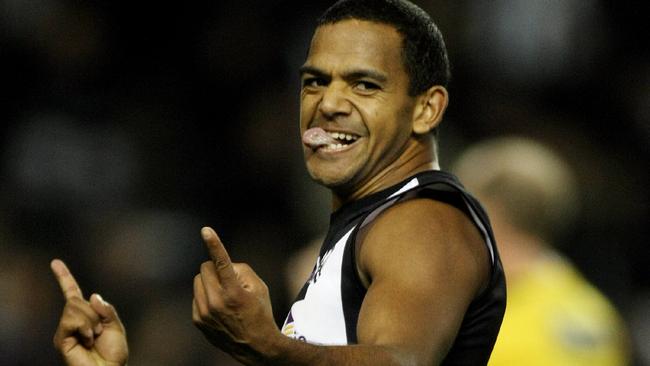
After being dropped for the grand final rematch in 2010 his whole world was turned upside down. I said, let’s talk about going back, and he thought I was joking.
But he was like a duck to water in defence and extraordinary one-on-one.
He went from being an All-Australian forward to becoming an All-Australian small back.
It’s just a pity he never got to play in a premiership.
Peter Foster came to us at Footscray from Fitzroy in 1983 as a centre half-forward.
By the following season he was playing centre half-back, and excelled there for the rest of his career.
Ashley McIntosh was a talented full-forward who became an elite full-back at the West Coast Eagles (just ask Billy Brownless).
Glen Jakovich also arrived at West Coast having played forward in the WAFL, but he was a natural in defence and dominated there throughout our premiership years.
At Collingwood Simon Prestigiacomo and James Clement proved they were better backs than forwards, in fact, brilliant backs.
It’s a lot more common for a forward to succeed as a defender than the other way around, but Fraser Gehrig springs to mind as player who went from the wing, to back to forward.
He was a strong offensive target at West Coast but his kicking for goal at times let him down. As he matured at St Kilda though his goal kicking improved dramatically to twice win the Coleman Medal in 2004 and 2005.
On Sunday the Blues take on Richmond.
The Tigers have gone small in their forward line this year so the logical choice is for Jones to take Jack Riewoldt.
Standing at 198cm, Jones has a slight height advantage over the 195cm Riewoldt as well as the speed, strength and agility to match him.
Riewoldt’s greatest asset is his knowledge of playing forward and ability to play high or low, but Carlton has several options to help Jones cover him.
This match will all come down to supply.
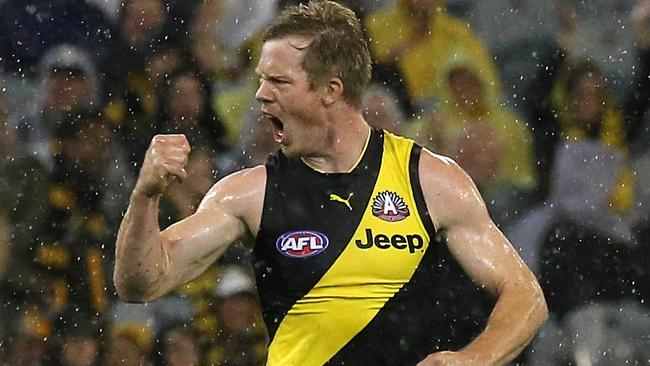
On the back of the performances of Bryce Gibbs, Patrick Cripps and Marc Murphy last week, the midfield battle with Dustin Martin, Trent Cotchin and Dion Prestia, will determine how well Jones or Riewoldt play.
Liam Jones has the capacity to make a major mark as a key back in the competition, no doubt about it, and I wish him all the luck to do so.




